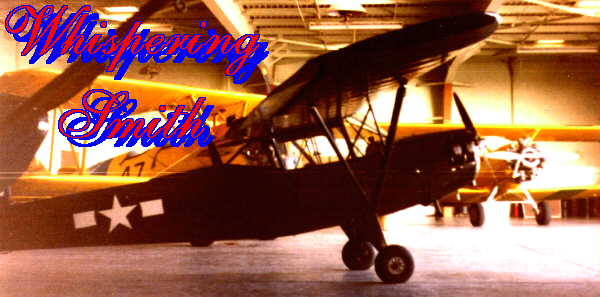

Is it a floatplane?
A few years back, in the early 70's, I happened to be ferrying a forked-tail Bonanza from Gowen Field in Boise, Idaho, to Denver's Stapleton airport. I was in the FSS (flight service station), getting updates on winds and weather, when I overheard a couple of the fellows there talking about a rather unusual event that had just occurred. My curiosity was up, and being naturally nosy I asked them for the whole story, and this is what they gave me.
Seems this forest service pilot was doing some surveying work at a nearby national forest in a Cub. He was over some really rough ranges when his engine started coughing and losing power. He happened to be over a small mountain lake at the time, and the only likely looking landing place was a very small clearing on the edge of the lake. The wind was blowing in from the lake so he had to make his dead stick approach over the trees toward the lake. Fortunately; the wind was rather brisk and he put it down, almost in the trees, and rolled out to a stop. Unfortunately; the clearing was too small and he ended up stopping in about 2 foot of water. But; he was stopped, alive, and with very little damage to the Cub. As luck would have it, (he sure had his share that day) a couple of foresters were doing a fish survey on the lake and saw the landing from the opposite shore. They had a couple of canoe's and they paddled over to help. When they got there and found the pilot ok, then helped him pull the bird up onto the shore, out of the water. The pilot did some checking of his engine and found a leak in the gascolator seal. It was a pretty simple fix and soon he had the engine purring nicely. But, even though the Cub is a short-field aircraft, it wasn't able to handle anything as short as this field (about 75 feet), even with the wind blowing good.
The three men discussed the idea of hiking back down to the fire-tower, about 15 miles, and radioing for a big helicopter to lift it out. But, the pilot got to looking at those two canoes and thought how much they looked like pontoons. He mentioned the idea to the other two and before they knew it they had the bird's wheels, each setting in a canoe. With some tree limbs for braces, and lots of nylon rope, they had it sitting there looking like a float-plane. Then, with some cut up tarp they managed to seal the top of the canoe's, and before you could say anything, the pilot was ready to go.
'This isn't a floatplane, is it'?
The pilot told him,
'Well, sort of!',
and went into more detail. After getting the predicament straight in his mind, the radio operator came up with a tailing pond at the local lumber mill. The pond was about 1000 foot long and with the floating logs moved out the of the way, it should work nicely. The airport man telephoned the lumber mill and explained the problem, and before long a landing site was ready. Radioed that he could give it a try the pilot made a couple of low passes over the pond, then put it down as lightly as he could. It touched and skimmed along the water, pretty as you please, but as soon as he chopped power the sudden weight on the pontoons was too much and they went under water, giving the Cub its second baptismal of the day. Even though they were sealed, at least enough to keep out spray, this was to much, and they quickly filled with water. Again, the pilot had more luck, because the pond was only about 4 foot deep. But, at least he was down again, and after reprieving his wet bird, getting to the airport, making out his reports, explaining his actions to his superiors, he found out that drying out the bird and any repairs would come out of his pocket. I never got to personally talk to the fellow, but I imagine he was grateful he had learned how to fly a floatplane.